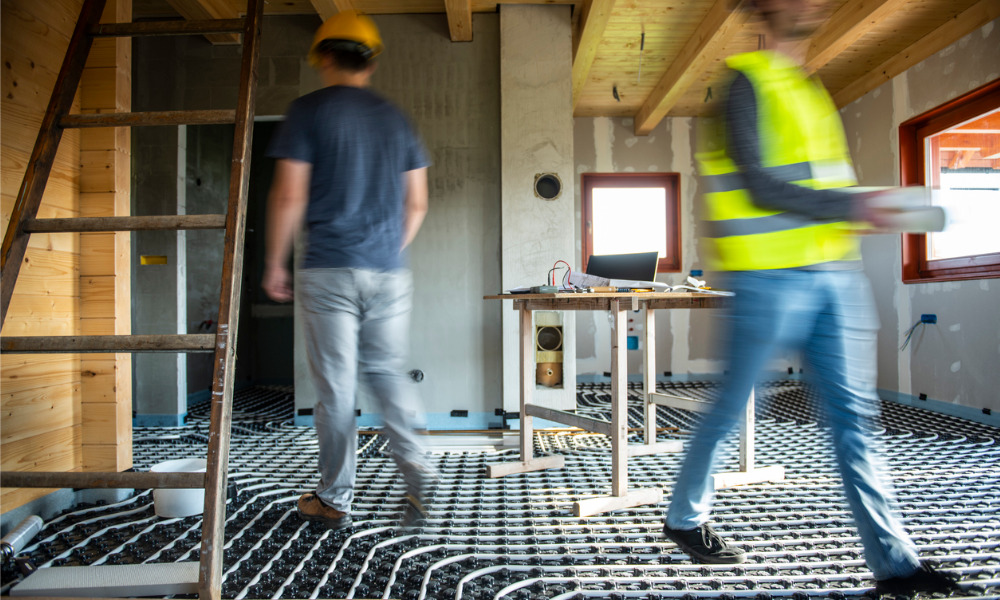Legal expert explains current guidelines, what employers can do and what the future will be for construction site safety post-pandemic

COS recently chatted with Megan Mah, an associate with law firm WeirFoulds LLP, about how COVID-19 has affected construction site safety, and the steps that can be taken to protect construction workers.
On the topic of construction site safety, Mah said that one of the greatest impacts has been the mandatory closure of non-critical work sites and the reduction of work hours. Speaking from an Ontario perspective (Mah is based in Toronto), “there’s been a lot of new guidelines…in Ontario the government has indicated that they’re increasing inspections and really cracking down on health and safety issues.”
She added that the province has seen an increase in work refusals and reports to the ministry of labour regarding COVID-19.
What are the guidelines?
The guidelines released so far have been relatively general, and Mah tells us that they will have to be tailored to specific work sites. Generally, these guidelines have been pretty realistic, she told us, though going forward the government will be releasing more guidelines and information on how to respect them (note: provincial and federal governments have started releasing more specific guidelines this week, as some businesses start to re-open).
What can be done to ensure workers’ safety on-site? “First and foremost, employers should keep apprised on upcoming regulations and guidelines” as well as “keeping on top of the news and government announcements,” said Mah.
There are additional measures that can be taken, she said, which include things such as: Hand hygiene – looking at if there are proper sinks on-site, soap and sanitizer available; making sure that adequate PPE is being distributed; social distancing and making sure that workers are properly distancing on-site; and staggering shifts, arrival times, breaks, etc. as well as encouraging workers to take breaks in separate areas.
Mah said that another thing that inspectors are looking into is “general sanitation: how often are high-touch areas being cleaned or sanitized?”
What can employers do?
“Employers need to make sure that they’re protecting the privacy and human rights of workers,” says Mah, though she explains that it’s a delicate balance to strike and they also need to be keeping track of their workers in case they need to perform contact tracing in the case on an outbreak.
Another important thing that employers should be doing is considering how to re-open safely if they are still closed. Employers need to be educating themselves on current policies and how to report an illness. On sites that are open, Mah said, “one thing employers can do is post [information] in visible areas and in the language used on worksite” so as to keep workers informed.
Additionally, the government has advised workers to go online and complete the COVID-19 self-assessment if they are experiencing any symptoms of the virus.
What can be done in future?
Mah explained that the guidelines are complementary to current OH&S statutes in place, including Ontario’s Occupational Health and Safety Act and Construction Projects regulation, as well as any applicable human rights legislation. Workers need to know that if they have been diagnosed with the virus, there are protections in place.
The Ontario government has already implemented new emergency leave provisions under Ontario’s employment standards legislation (the Employment Standards Act, 2000), which apply to leaves during declared emergencies and infectious disease emergencies, such as COVID-19. Since the new leave provisions were introduced by way of an amendment to the Employment Standards Act, 2000, and apply to infectious disease emergencies in general, they will likely remain in place after the pandemic.
“I think that this could have a lasting impact on the construction industry and how we perceive health and safety in general,” said Mah. She believes that we are going to see a lot more focus on hand hygiene, PPE, and physical distancing even after the pandemic.
“We’re also going to see an increase in inspectors who are deployed and enforcement of OH&S on-site,” she said. “[COVID-19] may impact future legislation and might broaden the scope of what the public perceives as health and safety… We might see a greater focus on issues like pandemic planning.”
Lastly, Mah tells us that we may see a bigger interest in mental health. Even before COVID-19 this was starting to become an emerging concern, but in the post-pandemic landscape we may see an increased focus moving forward.
For more information, WeirFoulds LLP has provided a list of resources for employers in the construction industry here. Additional information on COVID-19 can be found here.
Additionally, Mah and her colleagues Faren Bogach and Kayla Theeuwen have started a campaign called “Community Over COVID: Donate Your Lunch Money”. The initiative aims to encourage professionals who have started working from home to donate what they would have spent on a coffee or a lunch to the Daily Bread Food Bank. To support the campaign, click the link: http://support.dailybread.ca/goto/CommunityOverCOVID





